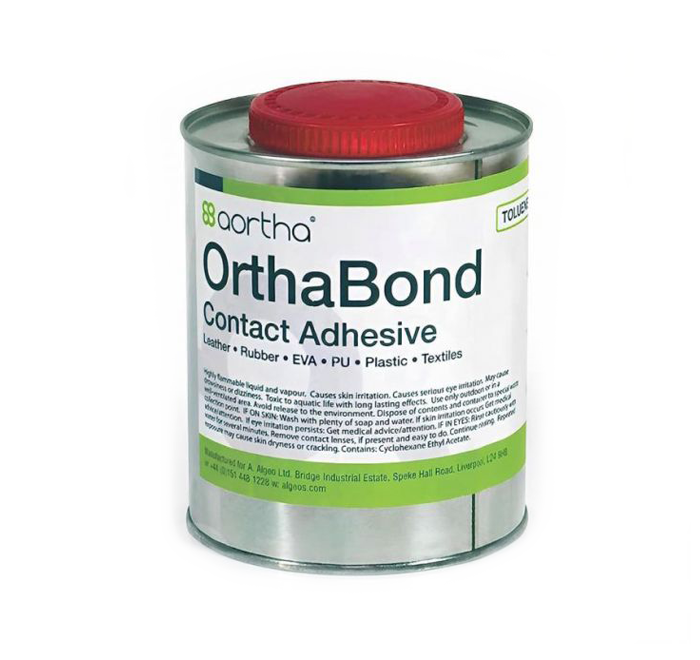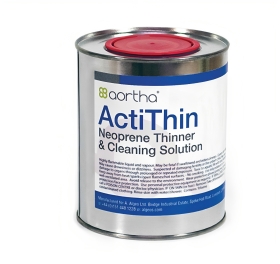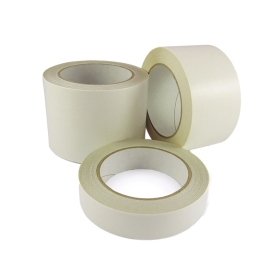Aortha Contact Adhesive | 1 Litre | All Purpose Shoe Glue ideal for Leather, Rubber, Foams, Vinyl
Professional Use Only - Very high strength rubber and shoe glue used professionally by shoe repairers, shoe makers, model and prop makers, as well as builders, repairers and manufacturers.
Product Description
OrthaBond Contact Adhesive | 1 Litre | All Purpose Glue ideal for shoes, leather, rubber, foams and plastic | Used professionally by Technicians, Engineers, Cobblers (shoe glue) and Artists.
Professional Use Only: Very high strength rubber and shoe glue used professionally by shoe repairers, shoe makers, model and prop makers, as well as builders, repairers and manufacturers.
Bonds Almost Anything: Adhesive Cement bonds most foams, rubber, plastics, plastic laminate, wood, plywood, leather and textiles to themselves and to each other. Creates a very high strength bond.
Strong and Long-lasting: High strength, multipurpose adhesive that bonds on contact with no need for clamping or support. It has the power to bond materials securely and long lasting.
Premium Quality: Excellent heat resistance for post-bond grinding/buffering. Toluene free for your safety. Passed independent prestigious SATRA test for being effective contact adhesive for foams.
Shoe Glue: The multipurpose nature of Orthabond means it’s the perfect shoe repair glue. Leather glue - used by bookbinders and saddlery workers. Glue for crafts - bonds textiles, paper, foam.
1 Litre tin.
Technical characteristics & usage advice
Application: Apply to both surfaces and allow to tack - 15 minutes as a general rule, but can be longer for materials such as PPC.
Use for bonding: EVA, Leather, Rubber, PU, Cork, PVC (Hardened), PPC, PE, Plastics and Textiles.
Instructions for use:
- Sand, grind or rough all materials prior to bonding to increase surface area.
- Clean and remove all grinding dust and fibres.
- Apply a thin, even coat of contact adhesive to both materials.
- Leave to dry for 10 minutes prior to bonding, this allows the solvents used to dissipate, ensuring the strongest possible bond.
- Press and hold surfaces together for 1 minute.
Maximum adhesion in 24 hours






